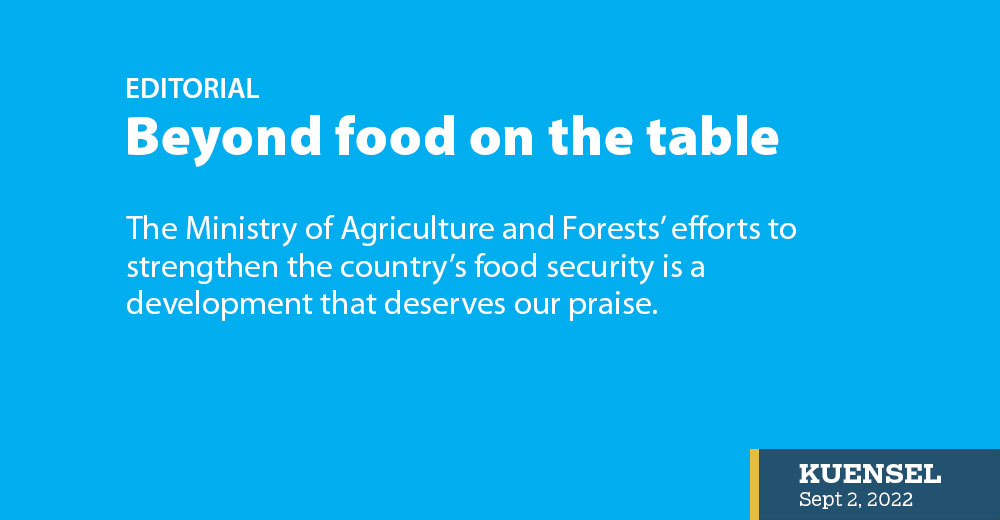The Ministry of Agriculture and Forests’ efforts to strengthen the country’s food security is a development that deserves our praise.
Asian Food and Agriculture Cooperation Initiative’s support through knowledge sharing and technical support is expected to play a vital role in the development of Bhutan’s agriculture sector.
The Initiative is already six projects in the country. Since Bhutan a member of the Initiative in 2016, supports in the fields of sustainable organic farming technology, managing plant genetic resources, migratory diseases and insect pests control, post-harvest technology of horticulture crops and improving animal genetic resources, among others, have been a major boost to ailing sector.
The conference that Bhutan hosted between August 29 and 31, which was attended by 15-member countries, passed a joint resolution to form a collaborative action to support the United Nation’s Sustainable Development Goal target to end hunger, food insecurity, and all forms of malnutrition by 2030.
More importantly, the conference recognised that Bhutan might need an enhanced effort to relieve food security. That means the country might need to go beyond the ministry’s eight-fold pathway to increase the country’s food production and security.
Put simply, Bhutan must revolutionise the foundations of the agriculture sector such as developing comprehensive plans for soil fertility, land use, and land lease, secure investments and technology to stem wildlife conflict, and secure inputs such as seeds, fertilisers and machinery, among others.
Agriculture officials say that for this kind of transformation to take effect, the sector will need all manner of support that the Initiative can lend, knowledge and seek technical guidance being the main.
This gives us a snapshot of where the sector is and also where the sector must aim to go. On a positive note, the Initiative has decided to work with Bhutanese experts to identify the agriculture challenges in Bhutan so that they can find the most suitable solutions for the country.
The result of this collaboration has the potential to change the sector that is as yet beset by several problems. Understanding the core issues the sector is grappling with is perhaps the first step. But without prompt and earnest actions, agriculture development could flounder.
In the face of increasing population and import figures, not forgetting the inherent challenges such as emptying rural households and rising unemployment among the country’s young people, the time has come for agriculture development must take a new turn.


